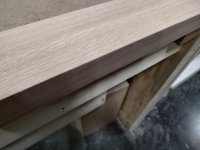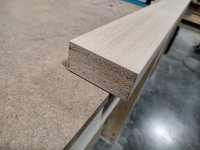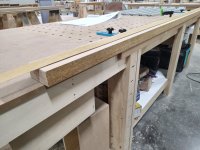4nthony
Member
I'm about to start the doors and drawer fronts on my credenza project. The plan is to use 4/4 quartersawn white oak milled down to 3/4".
The doors will be a simple panel construction, inset, and roughly 14" W x 19" H. I was watching one of Keith Johnson's videos where he goes through the process of using battens on the back of his doors to keep them flat during seasonal movement.
I was looking online at other hardwood furniture and noticed some use battens on their doors while others do not.
What are you thoughts on battens? Is it best to be safe and always install them to guarantee the doors remain flat? Or are they something that can be left off in regions where there isn't much humidity?
Door build starts around 10:15=668s
As for grain orientation, I'm still not sure. I like the look of both vertical grain and continuous horizontal grain so it may just come down to a coin flip. But, for truly continuous grain, I'll need 13' boards which may be harder to source
The doors will be a simple panel construction, inset, and roughly 14" W x 19" H. I was watching one of Keith Johnson's videos where he goes through the process of using battens on the back of his doors to keep them flat during seasonal movement.
I was looking online at other hardwood furniture and noticed some use battens on their doors while others do not.
What are you thoughts on battens? Is it best to be safe and always install them to guarantee the doors remain flat? Or are they something that can be left off in regions where there isn't much humidity?
Door build starts around 10:15=668s
As for grain orientation, I'm still not sure. I like the look of both vertical grain and continuous horizontal grain so it may just come down to a coin flip. But, for truly continuous grain, I'll need 13' boards which may be harder to source







